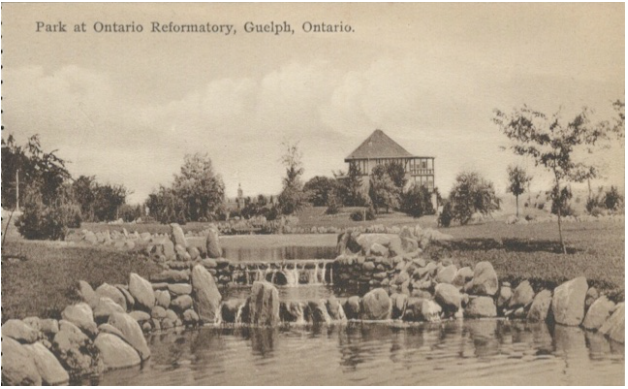GuelphToday has received the following letter to the editor from Cameron Shelley in regard to the historical significance of the former Ontario Reformatory:
Dear Editor:
On June 14, Guelph City Council will consider the disposition of the former Ontario Reformatory, including the matter of historical designation. The Province of Ontario, which is selling the Reformatory property, has recognized some of its historic buildings under the Ontario Heritage Act. It has requested that the City also designate them under its own bylaws as a condition of sale.
Besides designating the structures, the city also has the opportunity to designate the landscape on which they sit, as recommended unanimously by Heritage Guelph. Historically, this measure makes sense as the buildings and grounds have always been integral to each other. The grounds were a workplace for the prisoners, who constructed streams, pools, and gardens on them. These features have also been a resort for Guelphites, who walked through the grounds, fished in the streams, and swam in the pools, helping them to accept the Reformatory into their community.
Beyond their mutual history, the buildings and grounds may well share similar fates. Consider the example of the Priory, Guelph’s first building, built in 1827 for its founder, John Galt. Later owners of the building, which sat at what is now John Galt Park, crafted attractive gardens around it, making it an admired fixture in the town. In 1887, it was purchased for use as the city’s first Canadian Pacific Railway station. Although the CPR was urged to preserve at least some of the grounds as a community park, everything but the Priory was removed and storage sheds constructed in their place.
In 1911, the CPR constructed a new station further up the Speed River and set about to demolish the Priory. Efforts were made by some citizens, such as George Sleeman, to prevent it. However, the building was razed on its 99th anniversary in 1926.
The Priory was a popular attraction with visitors to Guelph. Postcards of the Priory were, along with the Church of Lady, among the Royal City’s most sought out souvenirs at the time. However, shorn of its trees and gardens and allowed to run down, most Guelphites had come to view it as little more than a few rotten logs. Later generations reconsidered the matter and an effort was made to resurrect the Priory as the central attraction of Doon Pioneer Village. The attempt fell through due to the price.
There is sometimes a synergy between structures and their settings: They are more than the sum of their parts. This was the case with the Priory and with the Reformatory too. Separating them can spoil their potential, as the sad end of the Priory suggests. Let us not make the same mistake now. Designating the Reformatory along with its lands as a Heritage Conservation District is an appropriate measure to maintain their combined historical significance and their future significance too.
Cameron Shelley
Guelph



